Influence of Structural Parameters on Mechanical Properties of Triply Periodic Minimal Surface Structure
Abstract
:1. Introduction
2. Experimental Setup
2.1. Sample Preparation
2.2. Compression and Tensile Experiments
2.3. Microstructure Observation
3. Simulation
3.1. Finite Element Model
3.2. Simulation Results Considering Void Defects
4. The Influence of Structural Parameters
4.1. Parameter Setting of the D structure
4.2. GA Fitting Formulas of the D Structure
4.3. The Modification of GA Fitting Formulas
4.4. Prediction Formulas of Mechanical Properties Based on Structural Parameters
Prediction Formulas
5. Structural Lightweight Design Based on D Structure Filling
5.1. Density Optimization of the Assembly Block
5.2. Stress Analysis of the Assembly Block
6. Conclusions
Author Contributions
Funding
Institutional Review Board Statement
Informed Consent Statement
Data Availability Statement
Acknowledgments
Conflicts of Interest
Nomenclature
| Elastic modulus of the porous structure | |
| Modulus of the material constituting the porous structure | |
| Density of the porous structure | |
| Density of the material constituting the porous structure | |
| Compress stress of the porous structure | |
| Compress stress of the material constituting the porous structure | |
| Equivalent cross-sectional area of the porous structure | |
| Volume of the porous structure | |
| Cell size of porous structure along loading direction | |
| Equivalent nominal modulus of the porous structure | |
| Equivalent nominal strength of the porous structure | |
| The surface area of the porous structure | |
| The surface thickness of the porous structure | |
| Material and structure constant | |
| Material and structure constant | |
| Material and structure constant | |
| Material and structure constant | |
| Material and structure constant | |
| Material and structure constant | |
| Material and structure constant | |
| Material and structure constant |
References
- Bartolomeu, F.; Gasik, M.; Silva, F.S.; Miranda, G. Mechanical Properties of Ti6Al4V Fabricated by Laser Powder Bed Fusion: A Review Focused on the Processing and Microstructural Parameters Influence on the Final Properties. Metals 2022, 12, 986. [Google Scholar] [CrossRef]
- Atwater, M.A.; Guevara, L.N.; Darling, K.A.; Tschopp, M.A. Solid State Porous Metal Production: A Review of the Capabilities, Characteristics, and Challenges. Adv. Eng. Mater. 2018, 20, 1700766. [Google Scholar] [CrossRef] [Green Version]
- Günther, F.; Hirsch, F.; Pilz, S.; Wagner, M.; Gebert, A.; Kästner, M.; Zimmermann, M. Structure-property relationships of imperfect additively manufactured lattices based on triply periodic minimal surfaces. Mater. Des. 2022, 222, 111036. [Google Scholar] [CrossRef]
- Xiao, X.; Xie, L.; Tang, R.; Liu, J.; Song, P.; Zhu, X.; Zhao, J.; Jiang, C.; Yang, S.; Wu, P. Improved Compressive Properties of Lattice Structure Based on an Implicit Surface Hybrid Optimization Design Method via Selective Laser Melting. Metals 2022, 12, 1477. [Google Scholar] [CrossRef]
- Zhang, L.; Feih, S.; Daynes, S.; Chang, S.; Wang, M.Y.; Wei, J.; Lu, W.F. Energy absorption characteristics of metallic triply periodic minimal surface sheet structures under compressive loading. Addit. Manuf. 2018, 23, 505–515. [Google Scholar] [CrossRef]
- Liu, B.; Liu, M.; Cheng, H.; Cao, W.; Lu, P. A new stress-driven composite porous structure design method based on triply periodic minimal surfaces. Thin-Walled Struct. 2022, 181, 109974. [Google Scholar] [CrossRef]
- Yang, L.; Ferrucci, M.; Mertens, R.; Dewulf, W.; Yan, C.; Shi, Y.; Yang, S. An investigation into the effect of gradients on the manufacturing fidelity of triply periodic minimal surface structures with graded density fabricated by selective laser melting. J. Mater. Process. Technol. 2020, 275, 116367. [Google Scholar] [CrossRef]
- Soro, N.; Attar, H.; Wu, X.; Dargusch, M.S. Investigation of the structure and mechanical properties of additively manufactured Ti-6Al-4V biomedical scaffolds designed with a Schwartz primitive unit-cell. Mater. Sci. Eng. A 2019, 745, 195–202. [Google Scholar] [CrossRef]
- Afshar, M.; Anaraki, A.P.; Montazerian, H.; Kadkhodapour, J. Additive manufacturing and mechanical characterization of graded porosity scaffolds designed based on triply periodic minimal surface architectures. J. Mech. Behav. Biomed. Mater. 2016, 62, 481–494. [Google Scholar] [CrossRef]
- Wang, H.; Chen, P.; Wu, H.; Chen, A.; Wu, S.; Su, J.; Wang, M.; Feng, X.; Yang, C.; Yang, L.; et al. Comparative evaluation of printability and compression properties of poly-ether-ether-ketone triply periodic minimal surface scaffolds fabricated by laser powder bed fusion. Addit. Manuf. 2022, 57, 102961. [Google Scholar] [CrossRef]
- Abueidda, D.W.; Abu Al-Rub, R.K.; Dalaq, A.S.; Lee, D.-W.; Khan, K.A.; Jasiuk, I. Effective conductivities and elastic moduli of novel foams with triply periodic minimal surfaces. Mech. Mater. 2016, 95, 102–115. [Google Scholar] [CrossRef]
- Kadkhodapour, J.; Montazerian, H.; Raeisi, S. Investigating internal architecture effect in plastic deformation and failure for TPMS-based scaffolds using simulation methods and experimental procedure. Mater. Sci. Eng. C 2014, 43, 587–597. [Google Scholar] [CrossRef] [PubMed]
- Ambu, R.; Morabito, A.E. Porous Scaffold Design Based on Minimal Surfaces: Development and Assessment of Variable Architectures. Symmetry 2018, 10, 361. [Google Scholar] [CrossRef] [Green Version]
- Elenskaya, N.; Tashkinov, M. Modeling of Deformation Behavior of Gyroid and I-WP Polymer Lattice Structures with a Porosity Gradient. Procedia Struct. Integr. 2021, 32, 253–260. [Google Scholar] [CrossRef]
- Kladovasilakis, N.; Tsongas, K.; Kostavelis, I.; Tzovaras, D.; Tzetzis, D. Effective mechanical properties of additive manufactured triply periodic minimal surfaces: Experimental and finite element study. Int. J. Adv. Manuf. Technol. 2022, 121, 7169–7189. [Google Scholar] [CrossRef]
- Gibson, I.J.; Ashby, M.F. The mechanics of three-dimensional cellular materials. Proc. R. Soc. London. A. Math. Phys. 1982, 382, 43–59. [Google Scholar]
- Gibson, L.J.; Ashby, M.F. Cellular Solids: Structure and Properties; Cambridge University Press: Cambridge, UK, 1997. [Google Scholar]
- Lu, Y.; Zhao, W.; Cui, Z.; Zhu, H.; Wu, C. The anisotropic elastic behavior of the widely-used triply-periodic minimal surface based scaffolds. J. Mech. Behav. Biomed. Mater. 2019, 99, 56–65. [Google Scholar] [CrossRef]
- Maskery, I.; Sturm, L.; Aremu, A.O.; Panesar, A.; Williams, C.B.; Tuck, C.J.; Wildman, R.D.; Ashcroft, I.; Hague, R.J.M. Insights into the mechanical properties of several triply periodic minimal surface lattice structures made by polymer additive manufacturing. Polymer 2018, 152, 62–71. [Google Scholar] [CrossRef]
- Abueidda, D.W.; Bakir, M.; Al-Rub, R.K.A.; Bergström, J.S.; Sobh, N.A.; Jasiuk, I. Mechanical properties of 3D printed polymeric cellular materials with triply periodic minimal surface architectures. Mater. Des. 2017, 122, 255–267. [Google Scholar] [CrossRef]
- Yang, L.; Han, C.; Wu, H.; Hao, L.; Wei, Q.; Yan, C.; Shi, Y. Insights into unit cell size effect on mechanical responses and energy absorption capability of titanium graded porous structures manufactured by laser powder bed fusion. J. Mech. Behav. Biomed. Mater. 2020, 109, 103843. [Google Scholar] [CrossRef]
- Yang, E.; Leary, M.; Lozanovski, B.; Downing, D.; Mazur, M.; Sarker, A.; Khorasani, A.; Jones, A.; Maconachie, T.; Bateman, S.; et al. Effect of geometry on the mechanical properties of Ti-6Al-4V Gyroid structures fabricated via SLM: A numerical study. Mater. Des. 2019, 184, 108165. [Google Scholar] [CrossRef]
- Maskery, I.; Aremu, A.O.; Simonelli, M.; Tuck, C.; Wildman, R.; Ashcroft, I.; Hague, R. Mechanical Properties of Ti-6Al-4V Selectively Laser Melted Parts with Body-Centred-Cubic Lattices of Varying cell size. Exp. Mech. 2015, 55, 1261–1272. [Google Scholar] [CrossRef] [Green Version]
- Sienkiewicz, J.; Płatek, P.; Jiang, F.; Sun, X.; Rusinek, A. Investigations on the Mechanical Response of Gradient Lattice Structures Manufactured via SLM. Metals 2020, 10, 213. [Google Scholar] [CrossRef] [Green Version]
- Keshavarzan, M.; Kadkhodaei, M.; Badrossamay, M.; Ravari, M.K. Investigation on the failure mechanism of triply periodic minimal surface cellular structures fabricated by Vat photopolymerization additive manufacturing under compressive loadings. Mech. Mater. 2020, 140, 103150. [Google Scholar] [CrossRef]
- Refai, K.; Brugger, C.; Montemurro, M.; Saintier, N. An experimental and numerical study of the high cycle multiaxial fatigue strength of titanium lattice structures produced by Selective Laser Melting (SLM). Int. J. Fatigue 2020, 138, 105623. [Google Scholar] [CrossRef]
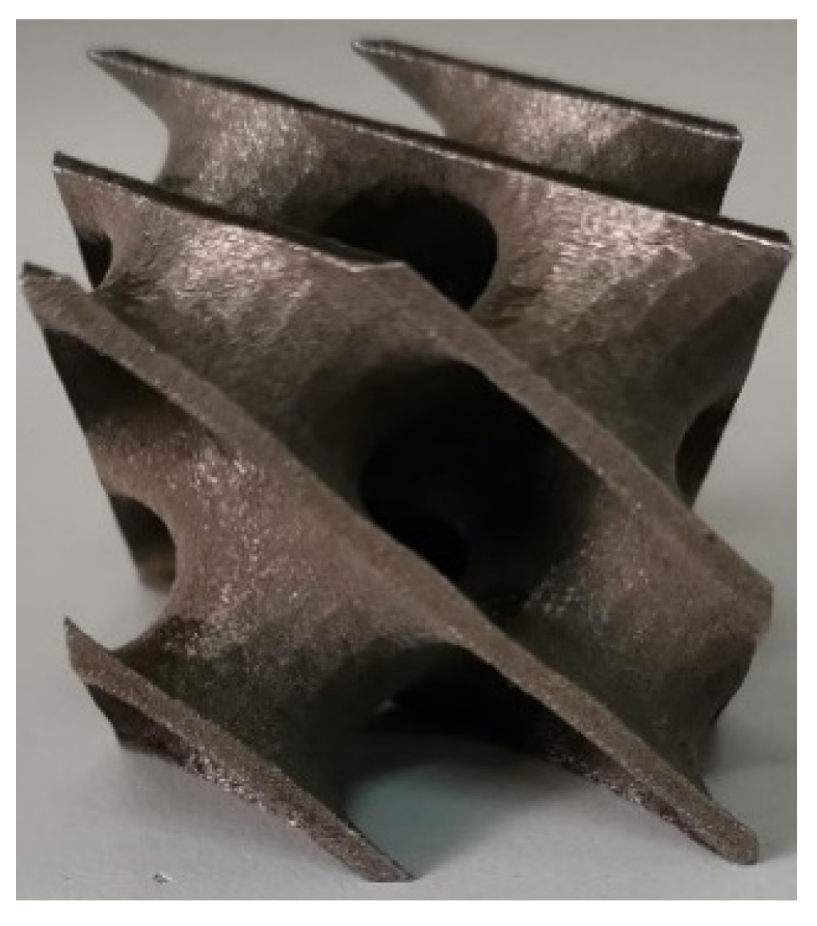

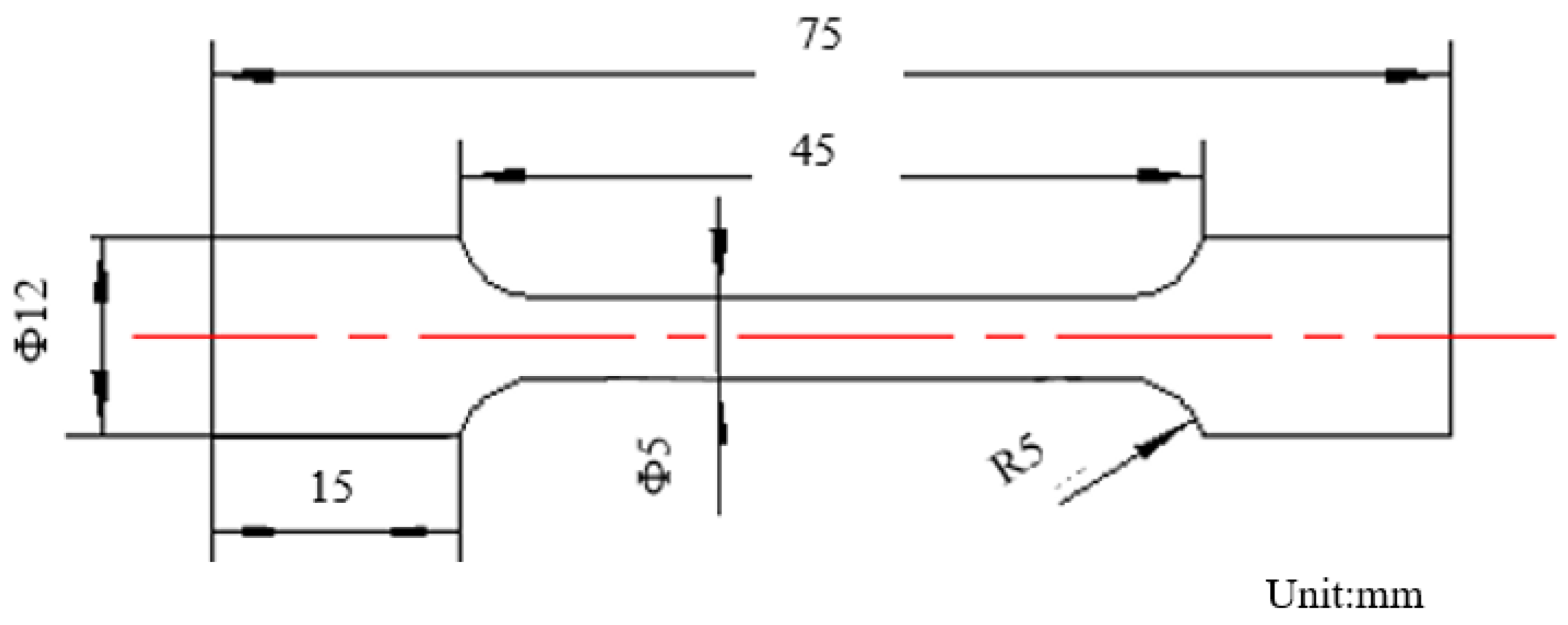
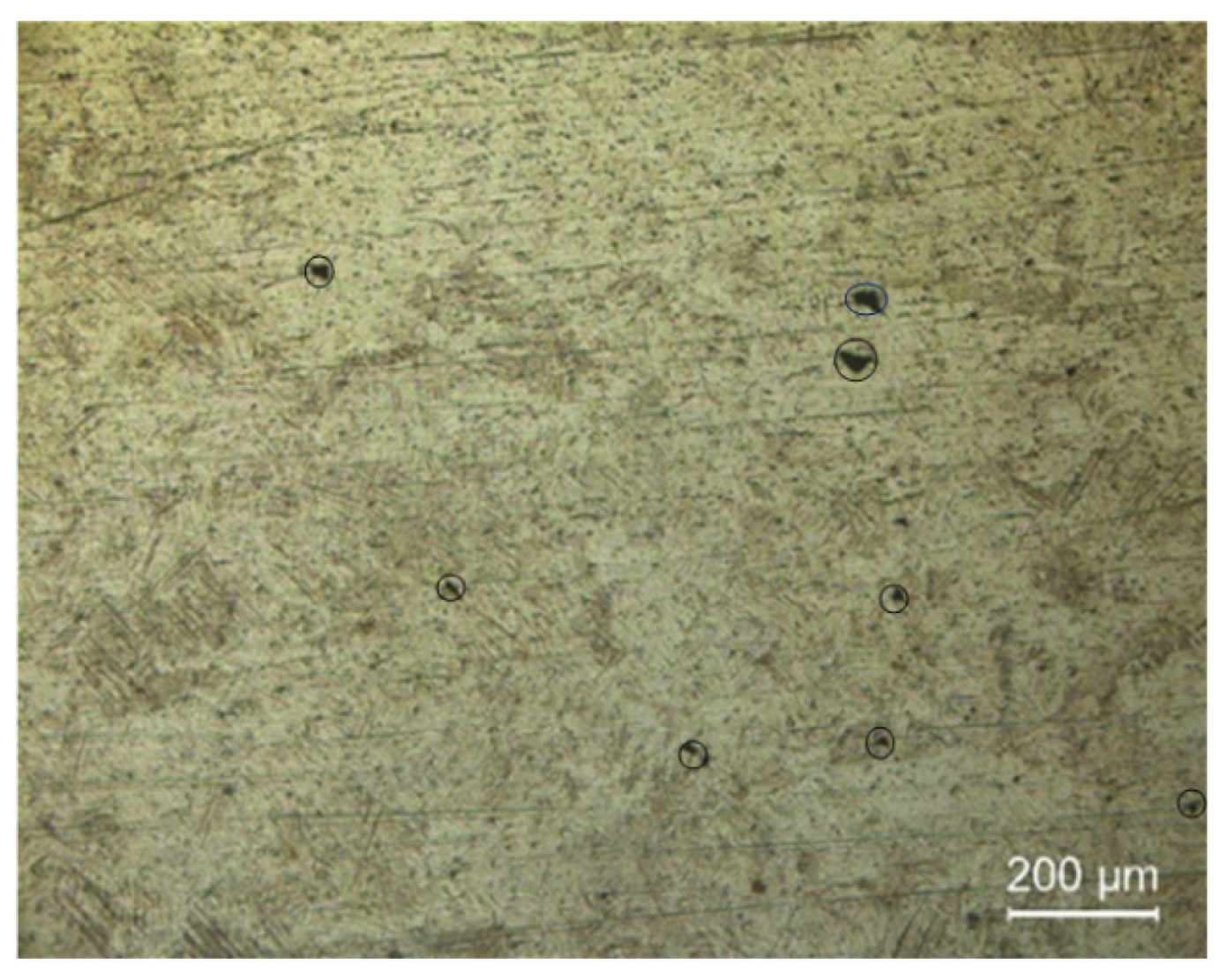


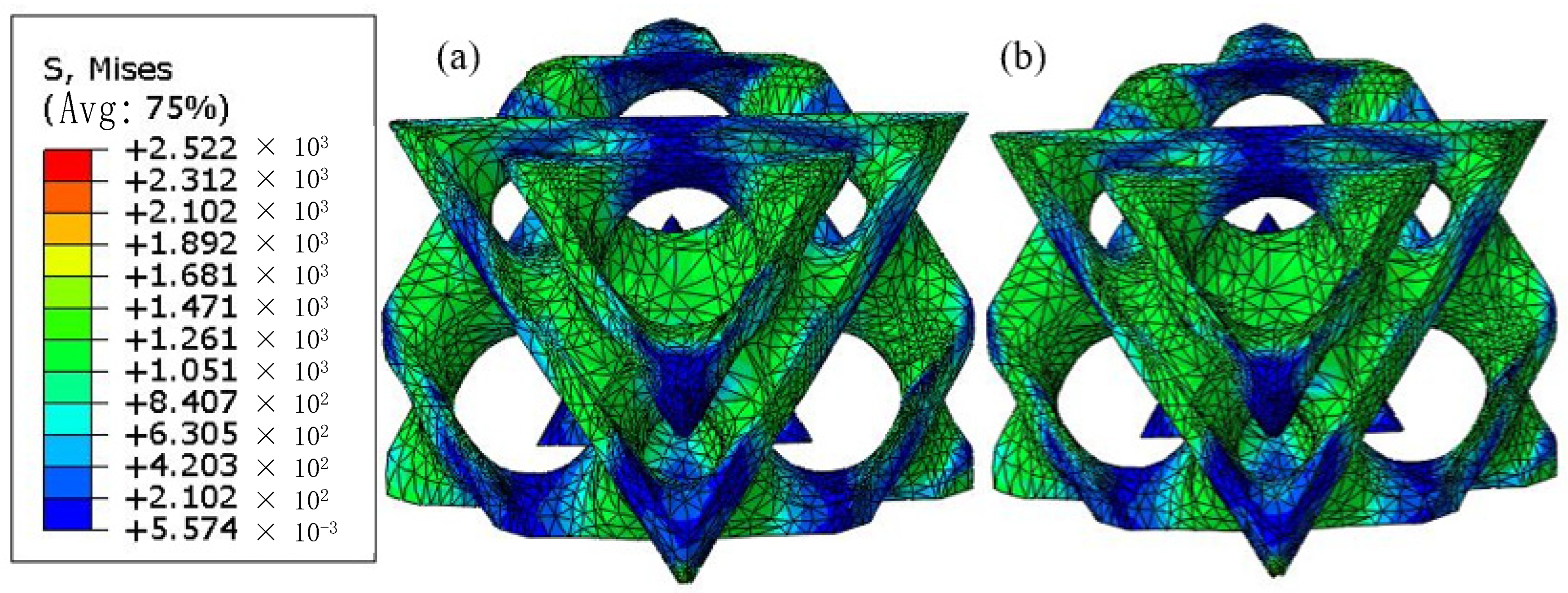
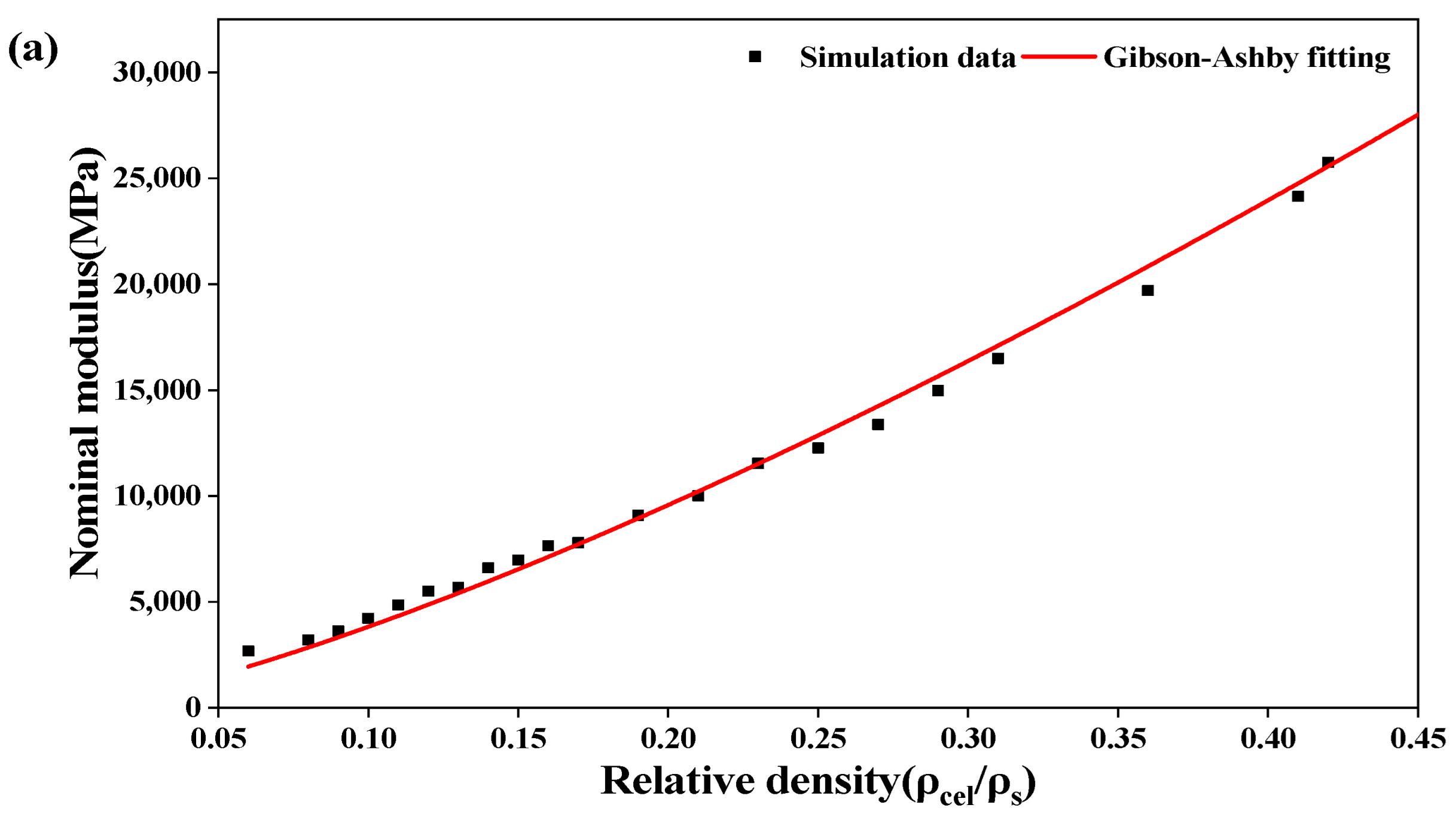
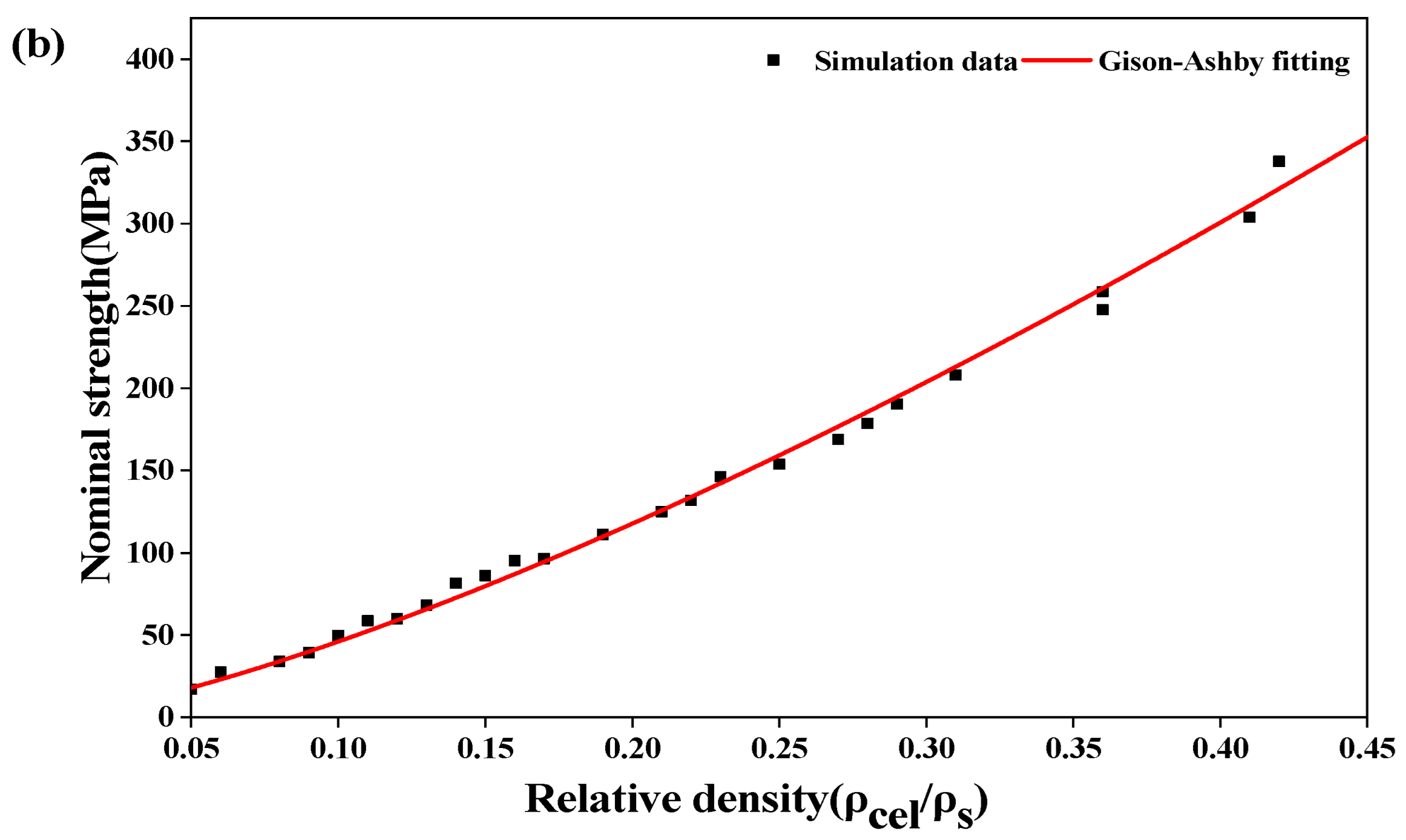
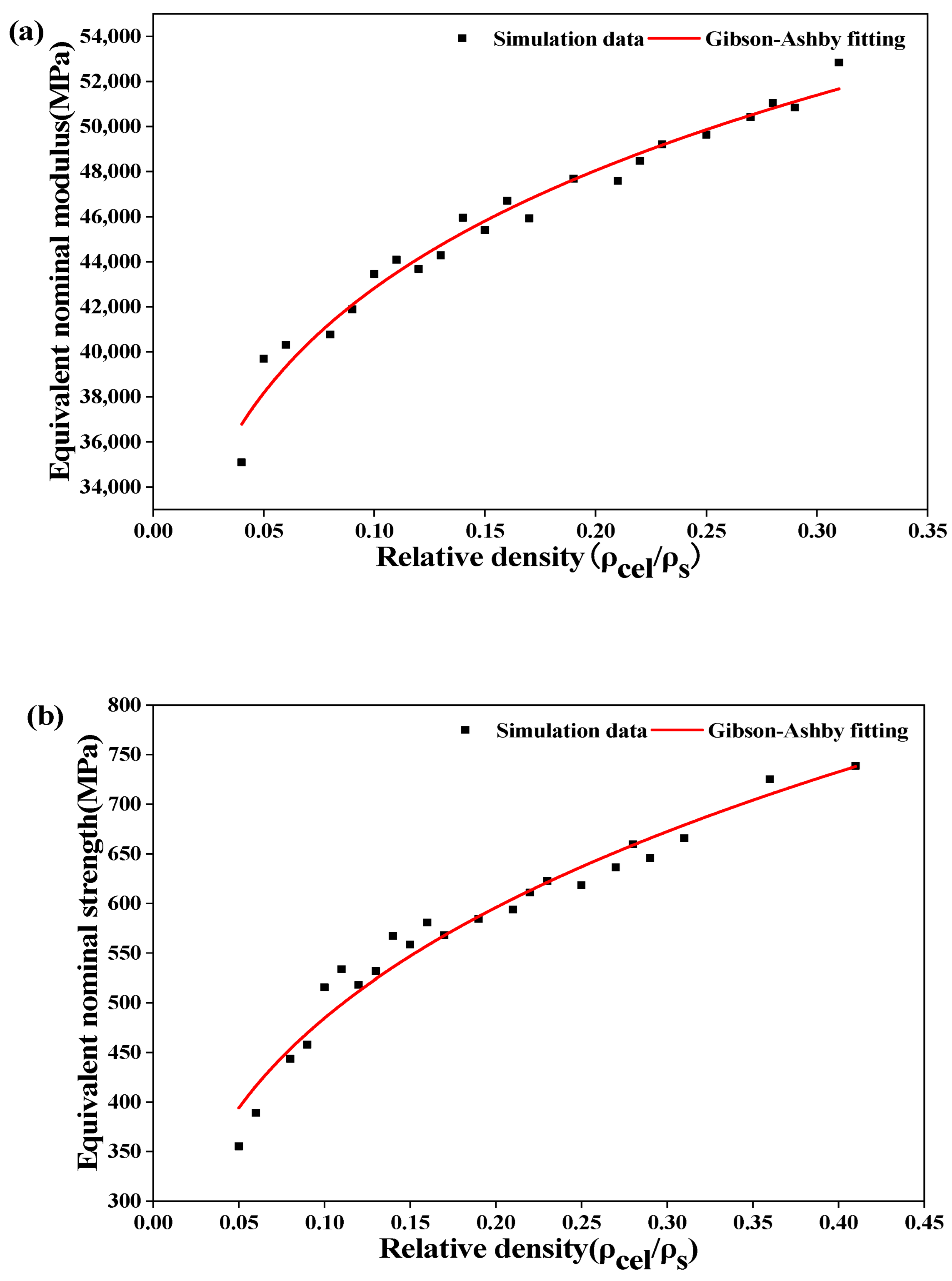

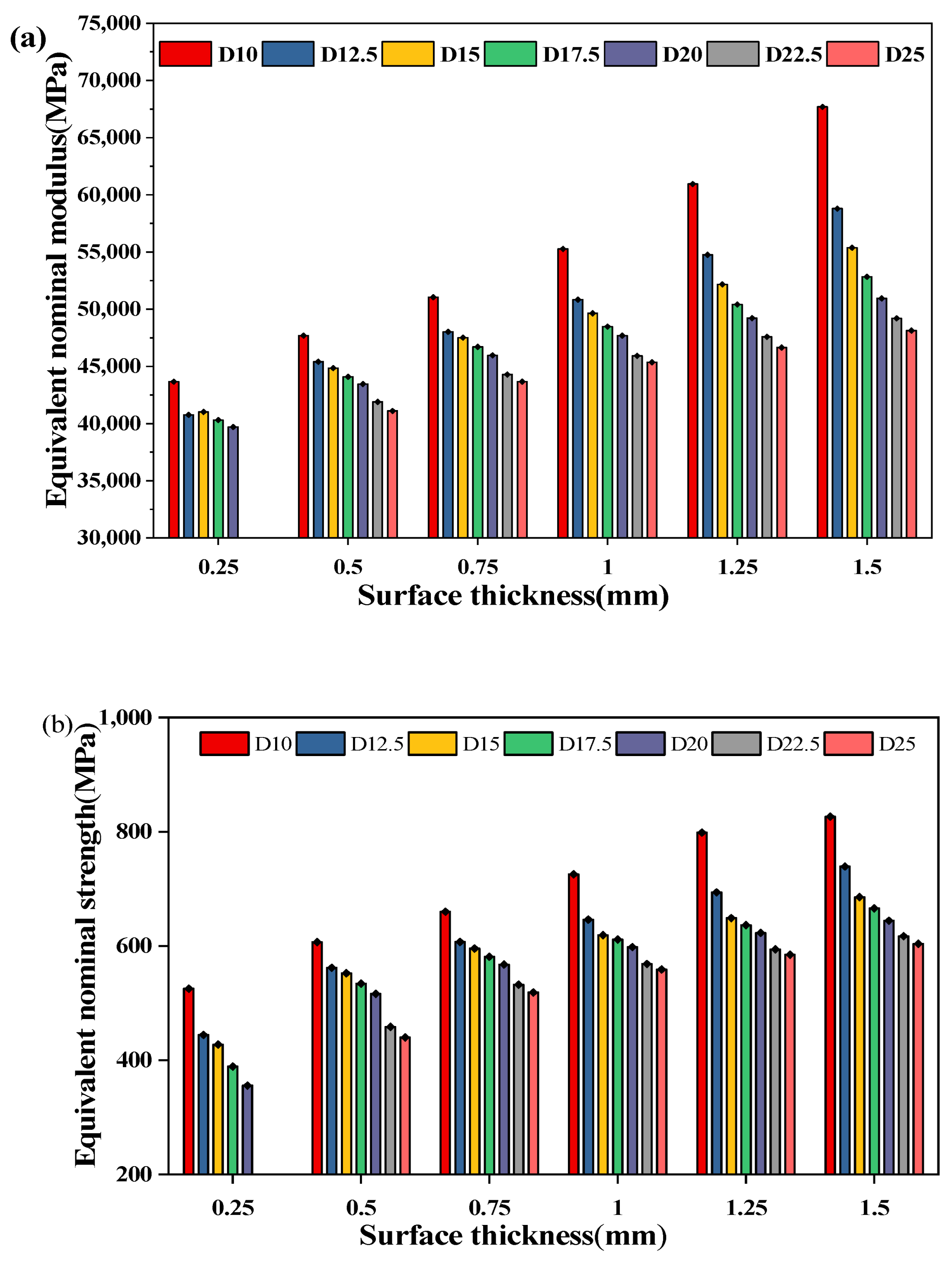
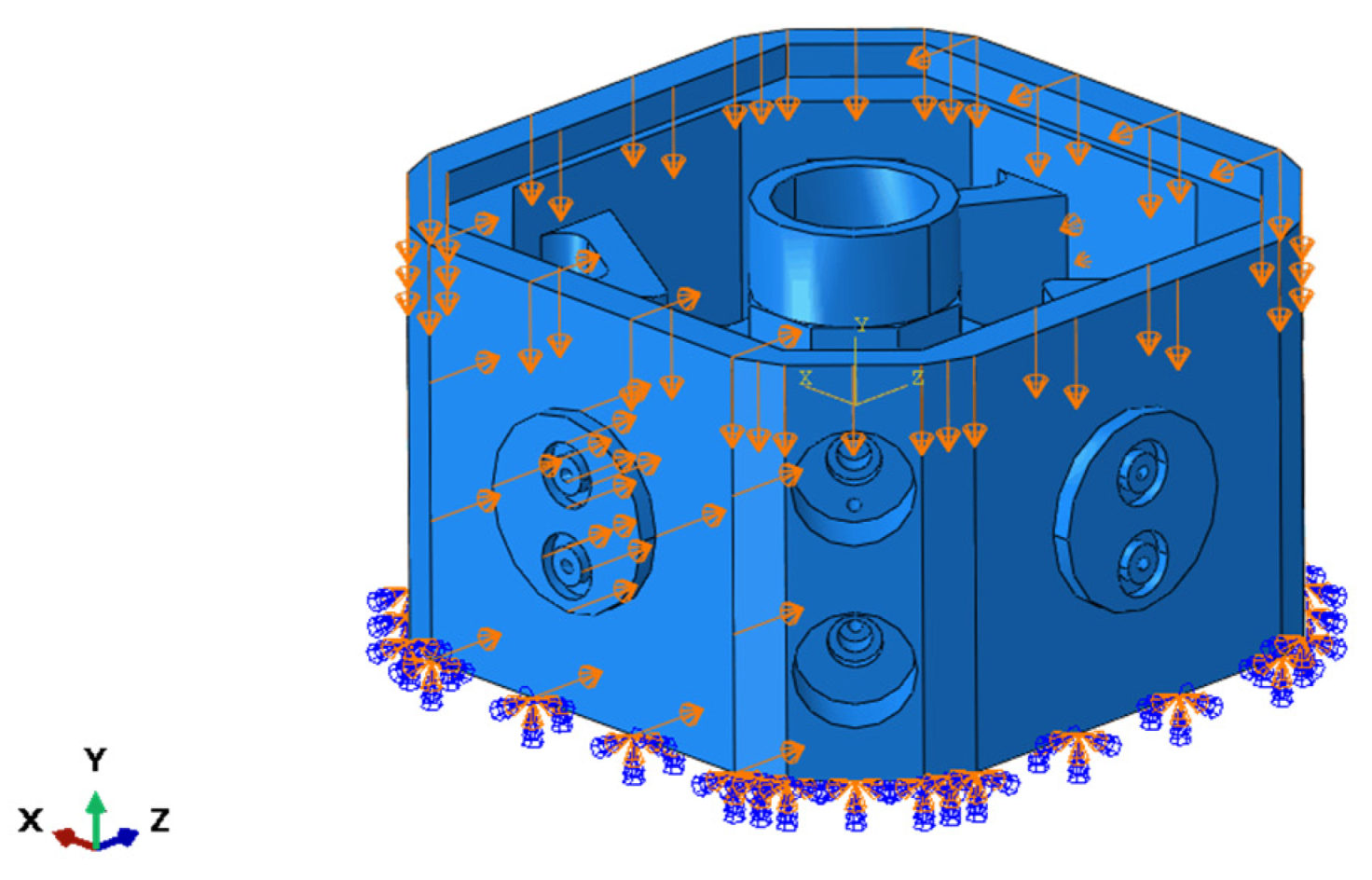

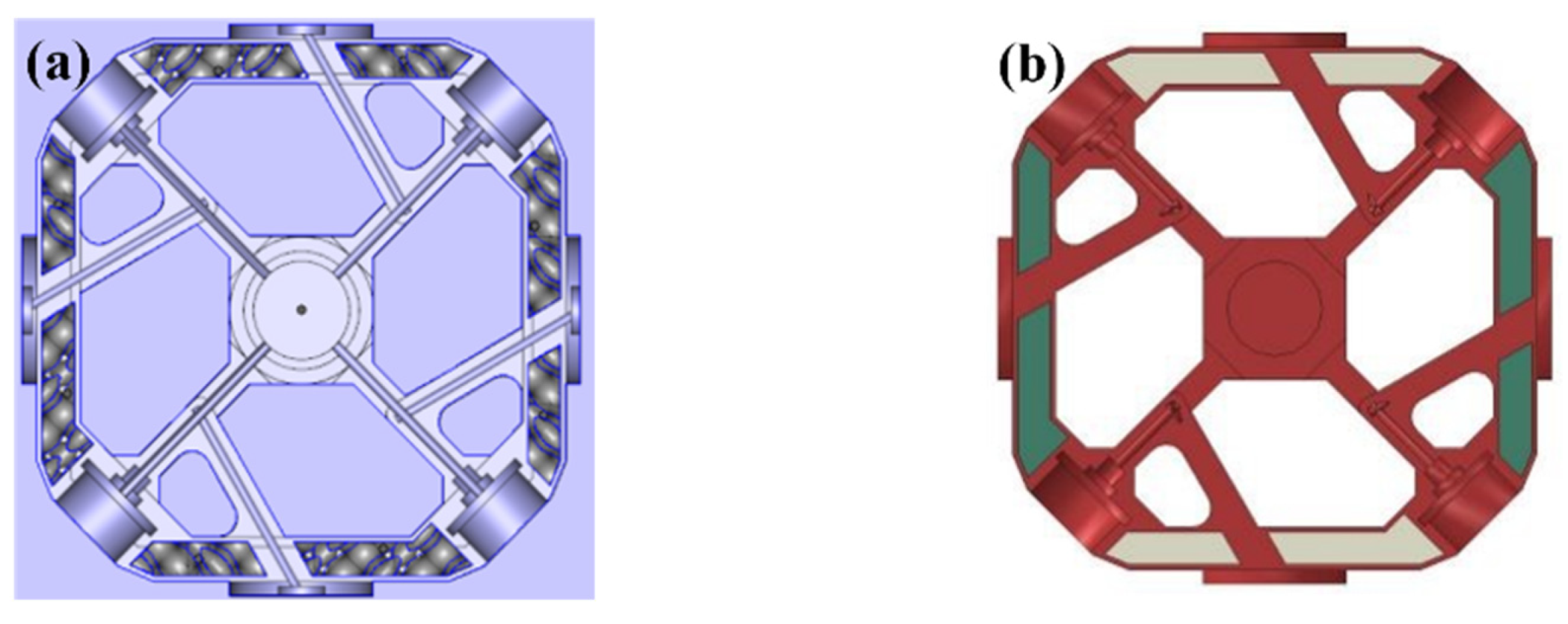
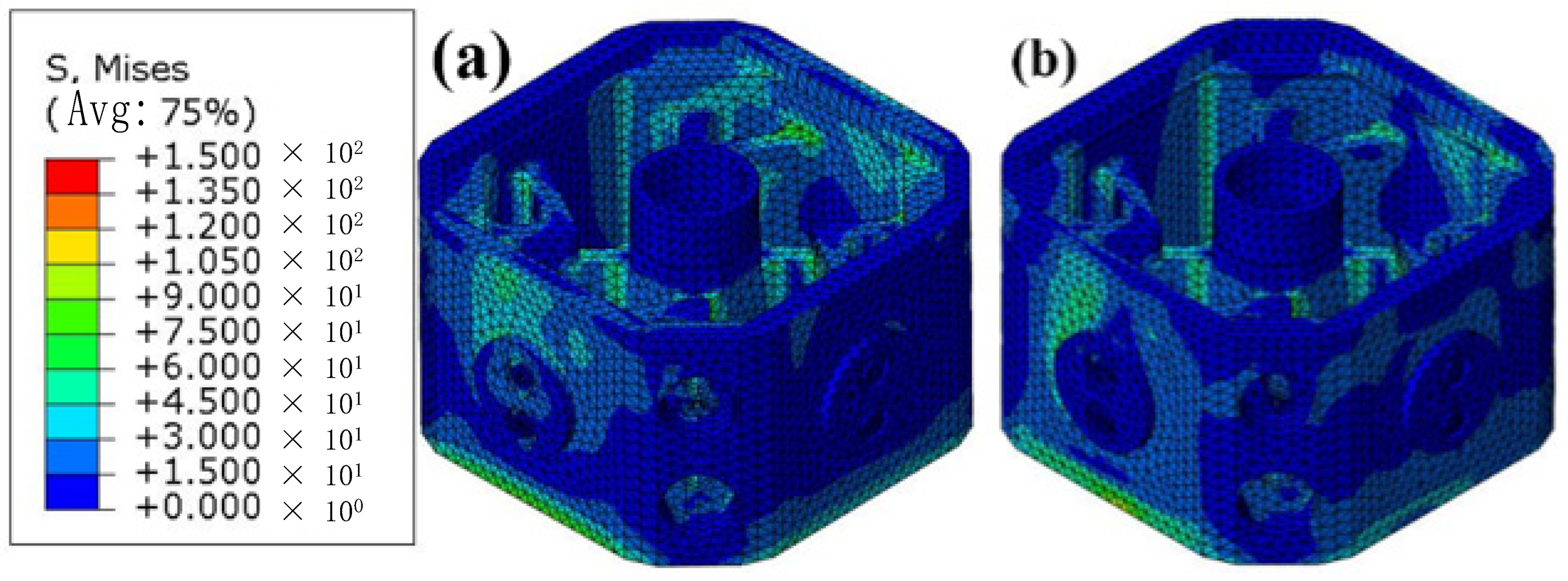
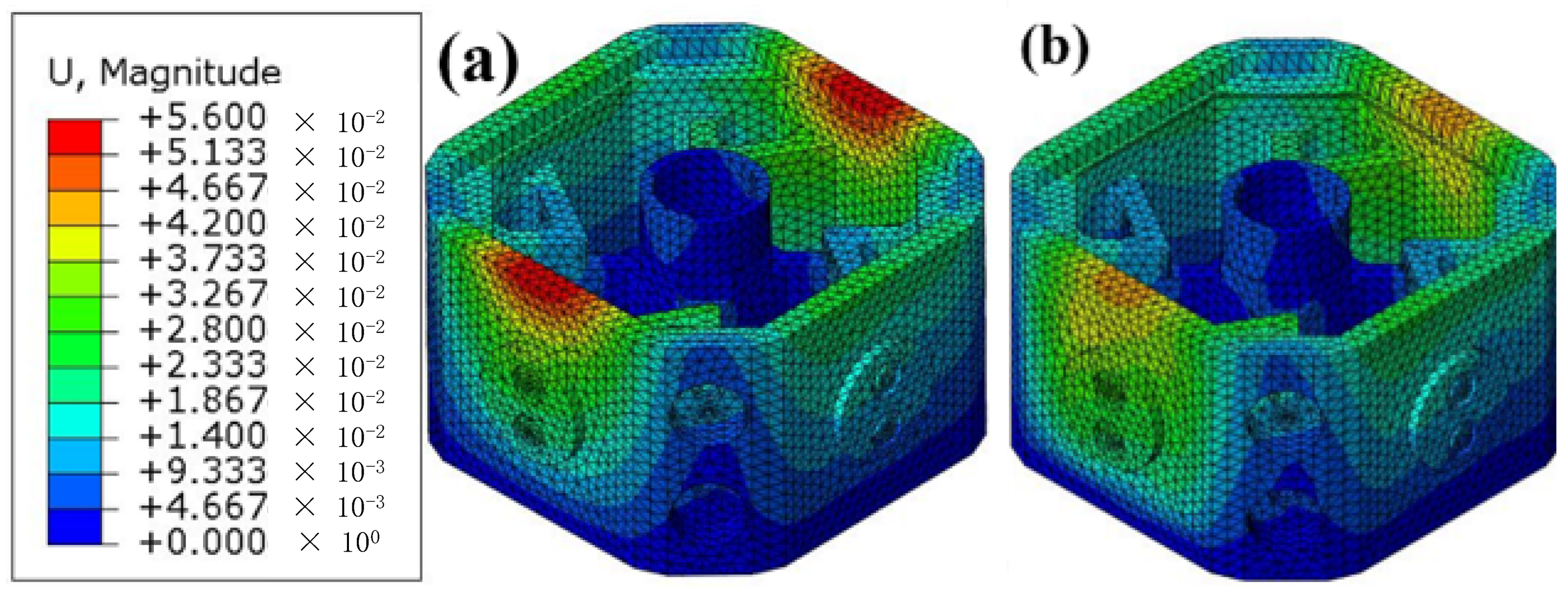
| Laser Power (W) | Scanning Speed (mm/s) | Lap Ratio | Layer Thickness (mm) |
|---|---|---|---|
| 225 | 1000 | 0.12 | 0.03 |
| TC4 | E (GPa) | ||
|---|---|---|---|
| 106 | 1194 | 1066 |
| Surface Thickness (mm) | Cell Size (mm) | Relative Density | Surface Thickness (mm) | Cell Size (mm) | Relative Density |
|---|---|---|---|---|---|
| 0.25 | 10 | 0.1 | 1 | 10 | 0.36 |
| 12.5 | 0.08 | 12.5 | 0.29 | ||
| 15 | 0.06 | 15 | 0.25 | ||
| 17.5 | 0.06 | 17.5 | 0.22 | ||
| 20 | 0.05 | 20 | 0.19 | ||
| — | — | 22.5 | 0.17 | ||
| — | — | 25 | 0.15 | ||
| 0.5 | 10 | 0.19 | 1.25 | 10 | 0.42 |
| 12.5 | 0.15 | 12.5 | 0.36 | ||
| 15 | 0.13 | 15 | 0.31 | ||
| 17.5 | 0.11 | 17.5 | 0.27 | ||
| 20 | 0.1 | 20 | 0.23 | ||
| 22.5 | 0.09 | 22.5 | 0.21 | ||
| 25 | 0.08 | 25 | 0.19 | ||
| 0.75 | 10 | 0.28 | 1.5 | 10 | 0.48 |
| 12.5 | 0.23 | 12.5 | 0.41 | ||
| 15 | 0.19 | 15 | 0.36 | ||
| 17.5 | 0.16 | 17.5 | 0.31 | ||
| 20 | 0.14 | 20 | 0.28 | ||
| 22.5 | 0.13 | 22.5 | 025 | ||
| 25 | 0.12 | 25 | 0.23 |
| Cell Size/mm | Surface Thickness/mm | Equivalent Nominal Strength/MPa | Equivalent Nominal Modulus/MPa | Poisson’s Ratio | |
|---|---|---|---|---|---|
| Cell 1a | 15 | 1.25 | 649 | 52,167 | 0.09 |
| Cell 1b | 15 | 0.75 | 595 | 47,519 | 0.1 |
Disclaimer/Publisher’s Note: The statements, opinions and data contained in all publications are solely those of the individual author(s) and contributor(s) and not of MDPI and/or the editor(s). MDPI and/or the editor(s) disclaim responsibility for any injury to people or property resulting from any ideas, methods, instructions or products referred to in the content. |
© 2023 by the authors. Licensee MDPI, Basel, Switzerland. This article is an open access article distributed under the terms and conditions of the Creative Commons Attribution (CC BY) license (https://creativecommons.org/licenses/by/4.0/).
Share and Cite
Chen, X.; Sun, G.; Zhu, J.; Kang, W.; Shang, D.; Deng, Z. Influence of Structural Parameters on Mechanical Properties of Triply Periodic Minimal Surface Structure. Metals 2023, 13, 285. https://doi.org/10.3390/met13020285
Chen X, Sun G, Zhu J, Kang W, Shang D, Deng Z. Influence of Structural Parameters on Mechanical Properties of Triply Periodic Minimal Surface Structure. Metals. 2023; 13(2):285. https://doi.org/10.3390/met13020285
Chicago/Turabian StyleChen, Xiusi, Guoqin Sun, Jiaqi Zhu, Wei Kang, Deguang Shang, and Zhanfeng Deng. 2023. "Influence of Structural Parameters on Mechanical Properties of Triply Periodic Minimal Surface Structure" Metals 13, no. 2: 285. https://doi.org/10.3390/met13020285




